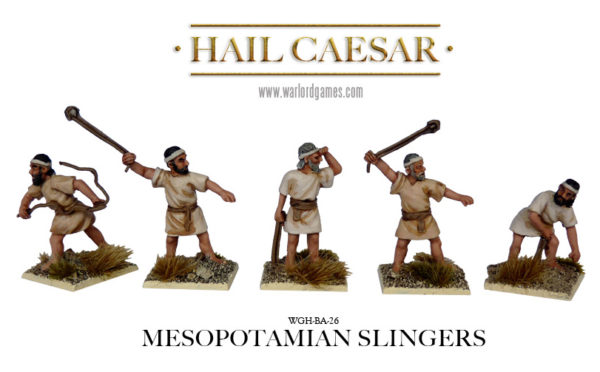The great rebellion of 703-625 BC was instigated by the united Aramaen and Chaldaen tribes of Mesopotamia, with support from Elam and the nomadic Arabs of the south. There were many independent Aramaen and Chaldaen tribes in Mesopotamia; it took extraordinary men to unite them against a common foe. Babylon was always a key city in the rebellions; at the height of hostilities it was razed to the ground and erased from the map.
Armies of the rebellions would be a mixture of irregular Aramaen, Chaldaen, Elamite and Arab soldiers; on the whole (maybe with the exception of the Elamites) they would be lightly equipped and had little or no training. It is likely that former Assyrian garrison soldiers could have fought in these armies at times. Ashurbanipal’s brother, the king of Babylon, was the main instigator of one of these rebellions.
Lightly armed skirmishers such as these would have been very common in any army of this period. The sling is probably the cheapest an oldest weapon, and with little practice anyone can use one.
Slings often prove more dangerous than a bow as they can knock out or kill a man, even when helmeted. The dress of these figures is typical of the people of Mesopotamia and Assyria.

